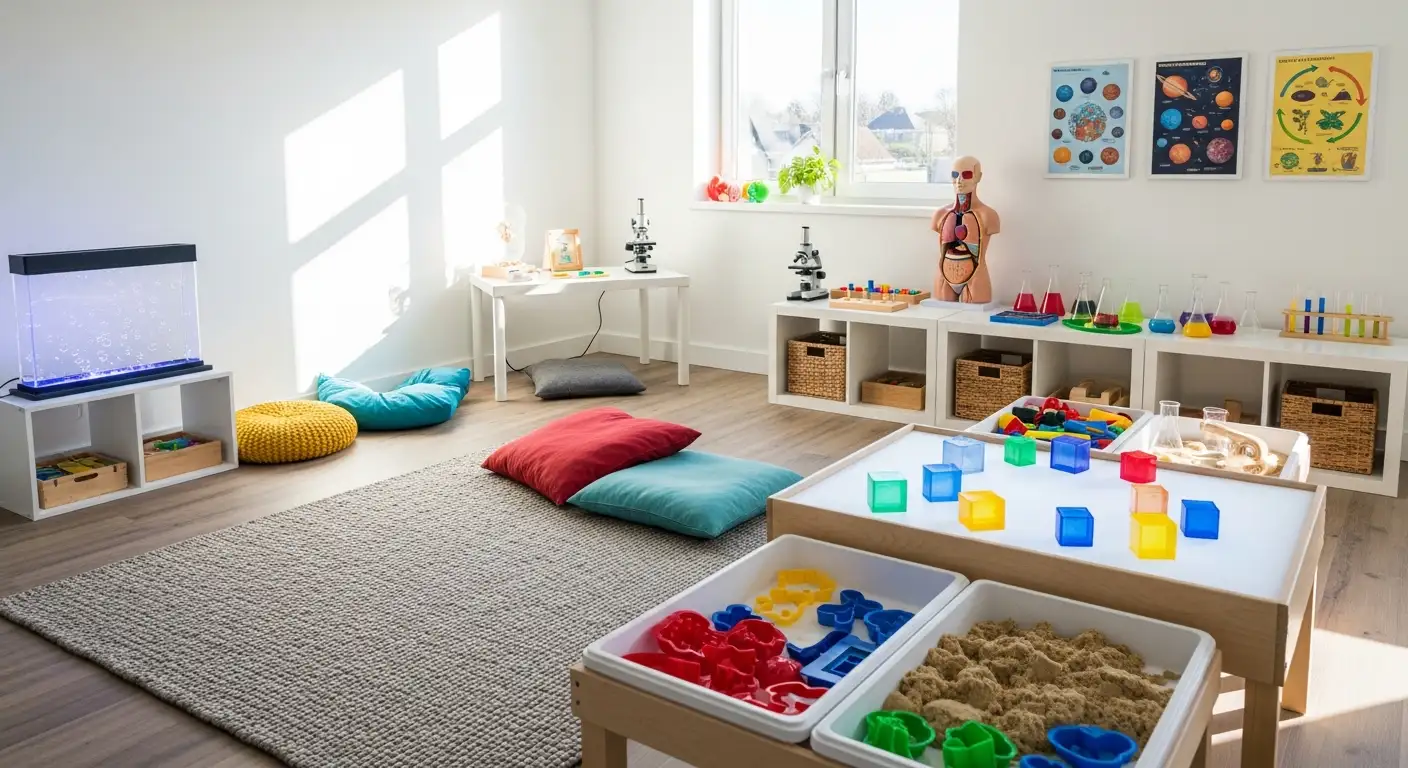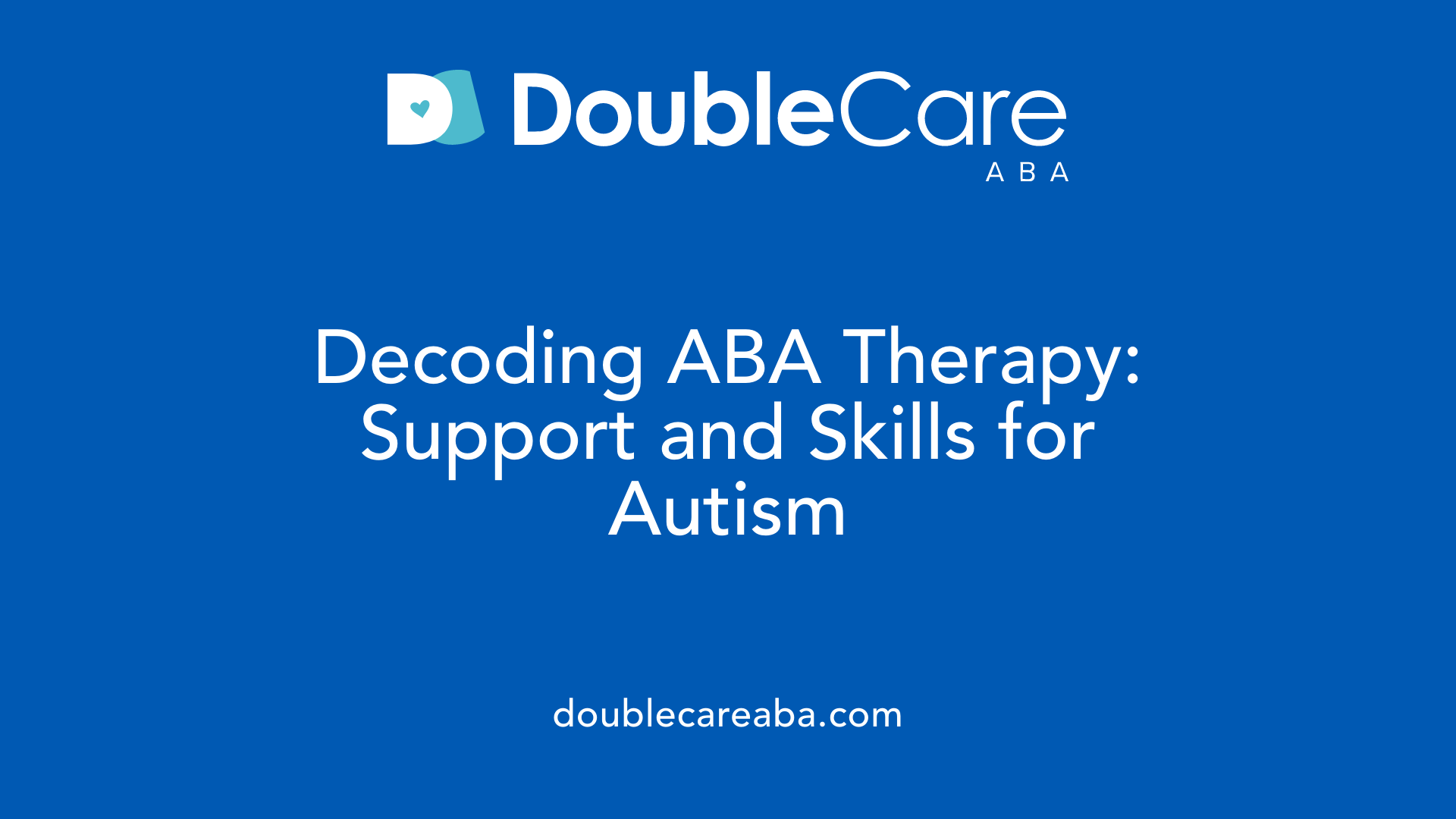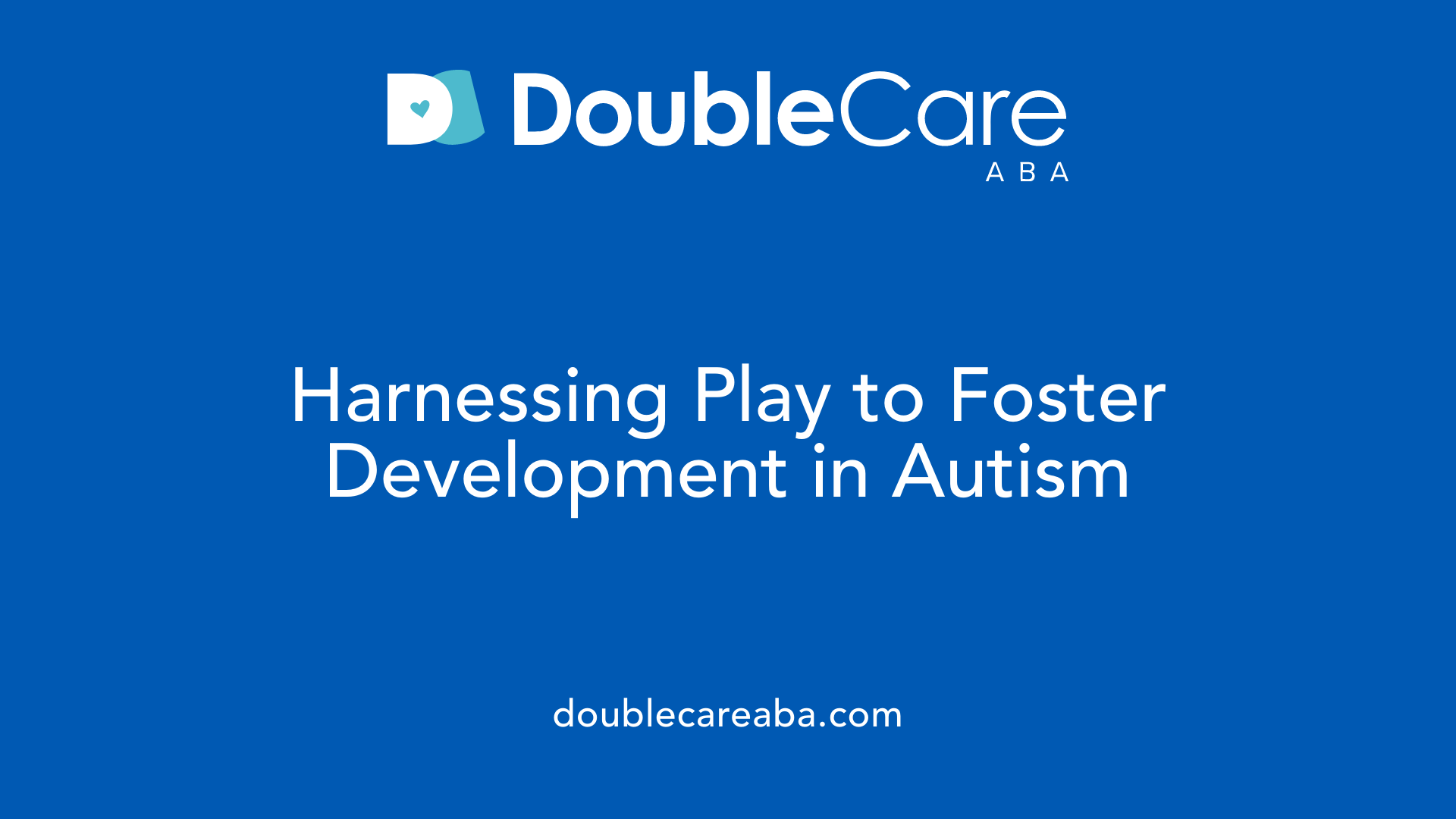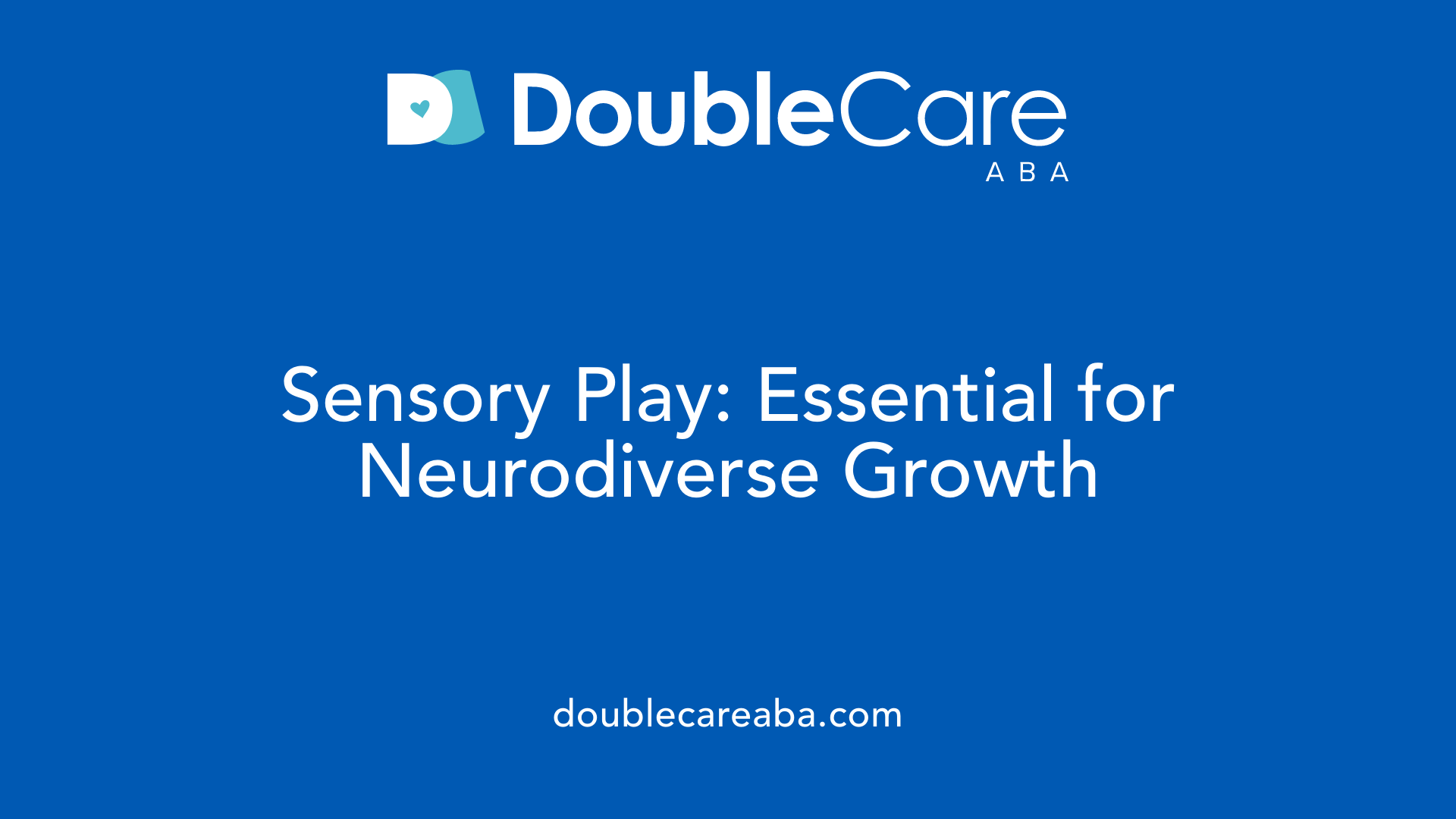Autism and Sensory Play Benefits
Unlocking Growth: How Play and ABA Therapy Transform Autism Support

The Power of Play and Science in Autism Therapy
Play is a fundamental mode of learning and development for all children, but it holds a special significance in autism therapy. When combined with Applied Behavior Analysis (ABA)—a science-driven approach—play becomes a powerful tool to foster communication, social skills, and emotional regulation. This article explores the interconnected benefits of sensory play and ABA therapy, revealing how these approaches work together to create engaging, supportive environments that help children with autism thrive.
Understanding Applied Behavior Analysis (ABA) Therapy in Autism Support

What is Applied Behavior Analysis (ABA) therapy and how does it help individuals with autism?
Applied Behavior Analysis (ABA) therapy is a science-based approach aimed at understanding how behavior works and how learning occurs through environmental factors. It focuses on increasing helpful behaviors—such as communication, social interaction, and self-care—and reducing behaviors that hinder an individual's growth or safety. ABA is widely recognized as an effective therapy for people with autism, helping to develop essential skills and enhance independence.
Definition and aims of ABA therapy
ABA therapy applies principles of learning and behavior to teach new skills and improve existing ones. Its core goals include bettering language and communication, improving attention and focus, fostering social skills, advancing memory and academics, and minimizing problem behaviors like tantrums or aggression. Using the 'A-B-Cs' model—antecedent, behavior, consequence—therapists analyze how specific events trigger behaviors and then shape more positive responses through reinforcement.
How ABA helps individuals with autism
Personalized ABA programs are crafted by qualified behavior analysts (BCBAs) and implemented by trained therapists. This individualized approach ensures therapy fits each child's unique needs. Techniques such as positive reinforcement reward desired behaviors, motivating children to repeat them consistently. ABA often integrates structured activities and naturalistic settings to maximize learning. Evidence shows that intensive, long-term ABA can lead to meaningful improvements in intellectual function, language use, social engagement, and daily living skills.
Science and structure behind ABA
ABA’s methodology is rooted in behavioral science, relying on precise data collection and ongoing assessment. By tracking progress and outcomes, therapists adjust interventions to optimize effectiveness. Therapists use strategies like discrete trial training (structured teaching moments) and natural environment teaching to embed learning in everyday contexts. This scientific framework makes ABA an evidence-based practice endorsed by major health organizations worldwide.
ABA therapy’s systematic yet flexible design empowers individuals with autism, enabling them to gain skills that improve their quality of life, academic success, and social participation.
Professionals Behind ABA Therapy: Qualifications and Roles
Who typically provides ABA therapy and what qualifications do they have?
ABA therapy is delivered by a range of qualified professionals, each playing distinct roles to support individuals with autism and other developmental challenges. The most recognized providers are Board Certified Behavior Analysts (BCBAs), Registered Behavior Technicians (RBTs), and other certified behavior analysts.
What are the qualifications of ABA therapy providers?
Board Certified Behavior Analysts (BCBAs): BCBAs hold graduate-level degrees (master's or higher) in behavior analysis or related fields. They complete rigorous supervised experience hours and pass the Behavior Analyst Certification Board (BACB) exam. BCBAs design, supervise, and evaluate individualized therapy programs. Advanced practitioners, known as BCBA-Ds, possess doctoral-level training and may take on research or supervisory roles.
Registered Behavior Technicians (RBTs): RBTs are paraprofessionals who work directly with clients to implement therapy plans created by BCBAs. They must complete specific training, obtain certification, and undergo background checks. RBTs provide day-to-day therapy sessions, collecting data and reinforcing targeted behaviors.
Other Certified Professionals: Some practitioners hold certifications like BCaBA (Board Certified Assistant Behavior Analyst), which is an undergraduate-level credential. These individuals work under BCBA supervision, supporting program implementation.
What roles do BCBAs, RBTs, and other practitioners fulfill?
| Role | Responsibilities | Training Level |
|---|---|---|
| BCBA | Develops treatment plans, supervises therapy, assesses progress | Master's or doctoral |
| BCBA-D | Advanced clinician and researcher, supervises larger programs | Doctorate |
| BCaBA | Assists in program implementation under BCBA supervision | Undergraduate |
| RBT | Provides direct therapy, collects data, reinforces behavior | Certificate |
These professionals collaborate to tailor ABA therapy to each learner's needs, ensuring effective and ethical practice. Licensing and certification requirements vary by location but consistently emphasize formal education, training, and supervised experience to maintain high-quality care.
The Central Role of Play in ABA Therapy for Autism

How Is Play Used to Promote Development in Children with Autism?
Play serves as a natural and enjoyable method to facilitate learning and development in children with autism. Within Applied Behavior Analysis (ABA) therapy, play is integrated to foster cognitive, social, and emotional growth. Through play, therapists can engage children in activities that teach essential skills such as communication, social interaction, and emotional management. This approach not only aids in reducing anxiety but also increases motivation, making therapy sessions more effective and pleasant.
What Types of Play Are Employed in ABA Therapy?
ABA therapy utilizes various types of play, each serving distinct developmental purposes:
- Structured Play: Guided activities designed to target specific behavioral or learning goals.
- Free Play: Child-led activities that encourage creativity and spontaneous social interactions.
- Sensory Play: Activities involving tactile, auditory, or visual stimuli that support sensory processing and self-regulation.
These play forms include pretend play, interactive games, and sensory-rich experiences, which help develop social skills, imitation, functional play, and cognitive flexibility.
How Does Play Create Motivating Learning Environments?
Incorporating play into ABA therapy creates engaging and motivating environments that enhance learning. Play-based techniques allow therapists to observe children’s interactions, communication, and problem-solving skills, which inform tailored activities aligned with developmental goals. This strategy fosters positive reinforcement and turn-taking, encouraging children to initiate and respond to social cues. Additionally, the enjoyable nature of play reduces resistance to therapy, helps transition between activities smoothly, and reinforces skills learned within therapy at home through accessible play-based activities like puzzles and turn-taking games.
Sensory Play: A Vital Component for Neurodiverse Development

Why Is Sensory Play Important for All Children?
Sensory play serves as a cornerstone in childhood development by stimulating neural pathways essential for cognitive growth. Regardless of neurotype, children benefit from engaging with sensory-rich environments, which promote creativity, exploration, problem-solving, and social interaction.
How Is Sensory Play Adapted for Children With Sensory Sensitivities?
For neurodiverse children, particularly those with autism, sensory play is thoughtfully adapted to accommodate sensitivities or sensory-seeking behaviors. Therapists and caregivers use sensory toys that provide tactile sensations, soothing sounds, and visual stimuli to create calming experiences. These adaptations help reduce discomfort and support sensory integration, allowing children to explore safely and comfortably.
What Role Does Sensory Play Have in Self-Regulation and Creativity?
Sensory play acts as a natural tool for fostering self-regulation by helping children manage their emotions and reactions. The open-ended nature of sensory activities encourages curiosity and inspires imagination and self-expression. Through tactile experiences and exploration of textures, smells, sounds, and visuals, children develop problem-solving skills and greater understanding of their environment.
Sensory toys also support relaxation and anxiety reduction, particularly important for children with sensory processing challenges. Moreover, these play experiences can strengthen social bonds by providing a shared platform for interaction among children of different neurotypes.
In summary, sensory play is integral not only for promoting neurological development but also for supporting emotional well-being and creativity, making it a vital component in therapies like ABA aimed at neurodiverse children.
Techniques and Strategies in ABA Using Play and Sensory Activities

What are the common techniques and strategies used in ABA therapy to address autism-related behaviors?
ABA therapy employs a variety of techniques grounded in behavioral science to support skill development and reduce challenging behaviors in children with autism. Positive reinforcement is a core strategy, rewarding desirable behaviors to increase their frequency. Therapists also use prompting and fading to gradually teach new skills, and task analysis to break down complex activities into smaller, manageable steps.
How are play-based strategies incorporated in ABA therapy?
Play is deliberately used to engage children and teach essential skills through natural, enjoyable interactions. Common play-based strategies include:
- Turn-taking: Encourages social reciprocity and sharing.
- Imitation: Helps develop communication and social learning.
- Functional play: Practices real-life skills using toys and everyday objects.
These strategies create motivating environments that make learning enjoyable and help children initiate and respond during social interactions. Play activities range from structured to free and sensory play, each targeting different developmental goals.
How do play activities target specific behavioral goals in ABA therapy?
Play activities are tied closely to individualized behavioral goals such as:
- Reducing tantrums by promoting frustration tolerance.
- Increasing engagement and sustained attention on tasks.
- Facilitating smoother transitions between activities.
Therapists observe children’s behaviors during play to assess communication, problem-solving, and emotional regulation. They then tailor activities and use reinforcement to shape positive behaviors and generalize skills to everyday contexts.
What role do sensory activities play in ABA therapy?
Sensory play is integrated to support self-regulation, reduce anxiety, and improve sensory processing, especially for sensory-sensitive children. Sensory toys providing tactile, auditory, and visual stimulation help build curiosity, creativity, and emotional management. These activities also offer a calming outlet for stimming behaviors and promote social bonding among diverse children.
By merging behavioral principles with thoughtfully designed play and sensory activities, ABA therapy creates effective, individualized interventions that foster communication, social interaction, and emotional well-being in children with autism.
Measuring Success and Addressing Challenges in ABA and Play-Based Autism Therapy

How is the effectiveness of ABA therapy measured in individuals with autism?
ABA therapy's success is largely gauged through meticulous data collection, focusing on improvements in specific behaviors like communication, social skills, and adaptive daily living abilities. Therapists regularly assess progress by observing changes during play and structured activities, which helps tailor interventions effectively.
Early intensive behavioral interventions (EIBI) show notable gains in IQ and language for many children, reinforcing the value of early and sustained ABA therapy. However, the absence of standardized evaluation protocols across practices means outcomes can vary, underscoring the need for consistent metrics and research-driven guidelines.
Using data analytics to monitor which therapies are beneficial or possibly overused can ensure each child receives care customized to their unique needs. Establishing clear standards for outcome measurement promotes transparency and advances the overall quality of ABA services for autistic individuals.
What are some criticisms or challenges associated with ABA therapy in autism treatment?
While ABA is a widely endorsed, evidence-based approach, it has faced criticism, especially concerning its origins. Early forms sometimes employed strict, aversive methods intended to modify behavior to fit neurotypical norms, which some argue suppressed natural autistic behaviors.
Modern ABA has increasingly shifted to play-based and child-centered techniques to create positive, motivating environments that respect the child’s individuality and comfort. Still, challenges remain around the intense focus on compliance and behavior modification, which can be overwhelming if interventions are not carefully personalized.
Ethical considerations stress the importance of respecting a child's autonomy and emotional well-being to avoid coercive practices. Access to qualified therapists also poses a challenge, as specialized providers may not be universally available, affecting equitable treatment opportunities.
Importance of individualized, respectful approaches
Central to successful ABA therapy is an individualized plan designed by qualified behavior analysts that considers each child's preferences, strengths, and sensory needs. Play and sensory activities help make therapy engaging and emotionally supportive, encouraging self-expression and natural learning.
By integrating respect for neurodiversity and focusing on meaningful skill acquisition rather than conformity, ABA therapy can promote both developmental growth and personal well-being. This balanced approach addresses both the potential and concerns tied to behavioral interventions for autism, fostering a more inclusive and ethical therapy model.
Integrating Play and ABA for Holistic Autism Support
The integration of sensory and play-based activities within Applied Behavior Analysis therapy exemplifies the modern, empathetic approach to supporting children with autism. These methods not only foster essential cognitive, emotional, and social growth but also enhance motivation and joy in learning. While ABA remains a scientifically validated and effective intervention, ongoing efforts to tailor therapy to individual needs and respect neurodiversity are vital. Encouraging families to support play at home and collaborating with qualified professionals can extend the benefits beyond therapy sessions. Together, play and ABA create a dynamic foundation for children with autism to explore, develop, and thrive in their communities.
References
- How Early Intervention ABA Therapy Uses Play To Teach
- The Benefits of Play in ABA Therapy for Children with Autism
- The Power Of Sensory Play In Childhood Development
- Applied Behavior Analysis (ABA)
- The Future of Autism and ABA: Predicting Outcomes
- Applied Behavior Analysis (ABA)
- Understanding ABA Therapist Qualifications
- Types Of ABA Therapy Jobs And Their Degree Requirements
















